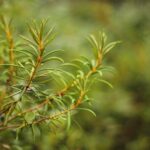April 21, 2022
Herbs in Chinese Medicine
Chinese Medicine is a set of theories and practices concerning human and its health. It is based on the principle that a man must be in good health and that the patient's condition is explained by the management of the balance between mind, body and soul.
Thousands of years old - it is believed to date back to around 1,250 BC - Chinese medicine recognizes that individual life balance and the relationship to the environment make human health. The theoretical basis of traditional Chinese medicine is based first on the ancient Taoist vision: the birth of two opposing and complementary entities, Yin and Yang. Each phenomenon, according to its proportion in one and the other, will have an identity and a fundamental equilibrium, which gives the means to restore the balance of the organism.
In China, traditional medicine still has its place in lifestyle. Comprising 5 pillars, including acupuncture, Chinese dietetics, Tui Na massage, energy exercises (Qi Gong and Tai Chi) and pharmacopoeia, this medicine is a preventive and curative discipline for all health disorders.
Traditional Chinese medicine is very much inspired by the Five Movements Theory. In accordance with the observation of nature, the Chinese established correlations between the plants, their colour, their part used, the season and the target organs.
For example, in the spring, green leaves are used to treat liver and muscle disorders, as well as vision problems. These disorders are related to the Liver, the organ of spring. In winter, black roots and salty flavours will be used instead for kidney disease, bone disorders and hearing.
Thousands of years old - it is believed to date back to around 1,250 BC - Chinese medicine recognizes that individual life balance and the relationship to the environment make human health. The theoretical basis of traditional Chinese medicine is based first on the ancient Taoist vision: the birth of two opposing and complementary entities, Yin and Yang. Each phenomenon, according to its proportion in one and the other, will have an identity and a fundamental equilibrium, which gives the means to restore the balance of the organism.
In China, traditional medicine still has its place in lifestyle. Comprising 5 pillars, including acupuncture, Chinese dietetics, Tui Na massage, energy exercises (Qi Gong and Tai Chi) and pharmacopoeia, this medicine is a preventive and curative discipline for all health disorders.
Traditional Chinese medicine is very much inspired by the Five Movements Theory. In accordance with the observation of nature, the Chinese established correlations between the plants, their colour, their part used, the season and the target organs.
For example, in the spring, green leaves are used to treat liver and muscle disorders, as well as vision problems. These disorders are related to the Liver, the organ of spring. In winter, black roots and salty flavours will be used instead for kidney disease, bone disorders and hearing.
Main herbs used in Chinese medicine
Angelica Root
It is widely used in China, whether alone or in the formulas. According to Chinese medicine, Angelica Root works on the liver. This organ is responsible for the storage of blood and its circulation in the body. It controls the drainage and dispersion of Qi (vital energy) throughout the body. The plant also has a beneficial effect on the spleen. In Chinese medicine, this part of the body controls the processing of food to extract nutrients, as well as their transport in the blood.
Wormwood Herb
This herb is used in Chinese medicine to eliminate the heat in the body, clear the blood and treat insects bites. It is used also for dyspepsia, as a remedy for poor appetite, and for treatment of various infectious diseases spread by insects. This plant was studied as an anti-malaria cure. Early research shows that taking wormwood improves the quality of life in some patients with Crohn's disease.
Knotgrass Herb
This plant is known for its beneficial action on the hair. The root of multi-flowered knotgrass has the property of boosting the energy of the liver and kidney. The plant is one of the most valuable of Chinese medicine. It is used for the treatment of diarrhoea and dysentery, as a remedy for jaundice and gonorrhoea. An infusion made from the dried herb is used as a topical astringent for bleeding haemorrhoids.
It is widely used in China, whether alone or in the formulas. According to Chinese medicine, Angelica Root works on the liver. This organ is responsible for the storage of blood and its circulation in the body. It controls the drainage and dispersion of Qi (vital energy) throughout the body. The plant also has a beneficial effect on the spleen. In Chinese medicine, this part of the body controls the processing of food to extract nutrients, as well as their transport in the blood.
Wormwood Herb
This herb is used in Chinese medicine to eliminate the heat in the body, clear the blood and treat insects bites. It is used also for dyspepsia, as a remedy for poor appetite, and for treatment of various infectious diseases spread by insects. This plant was studied as an anti-malaria cure. Early research shows that taking wormwood improves the quality of life in some patients with Crohn's disease.
Knotgrass Herb
This plant is known for its beneficial action on the hair. The root of multi-flowered knotgrass has the property of boosting the energy of the liver and kidney. The plant is one of the most valuable of Chinese medicine. It is used for the treatment of diarrhoea and dysentery, as a remedy for jaundice and gonorrhoea. An infusion made from the dried herb is used as a topical astringent for bleeding haemorrhoids.





